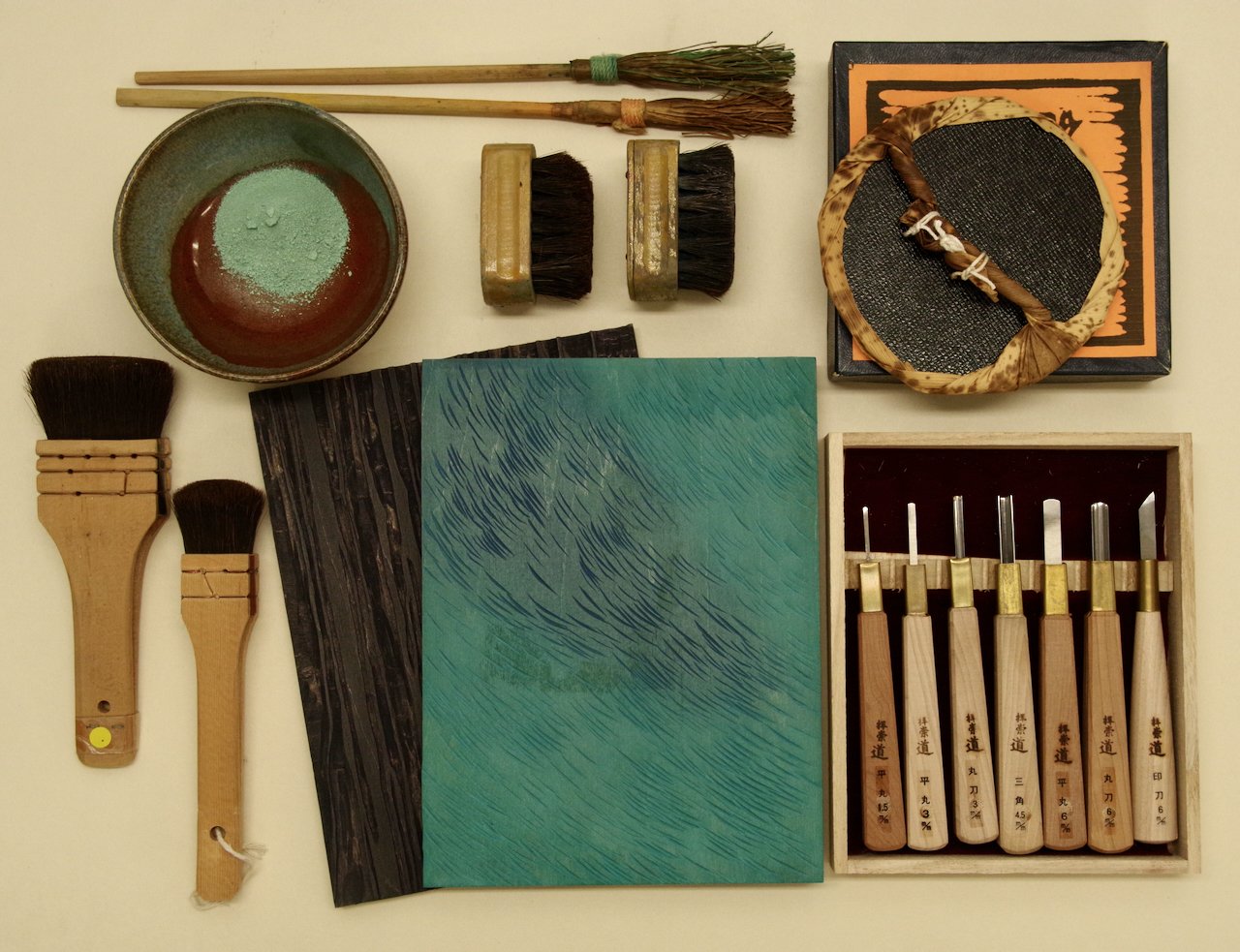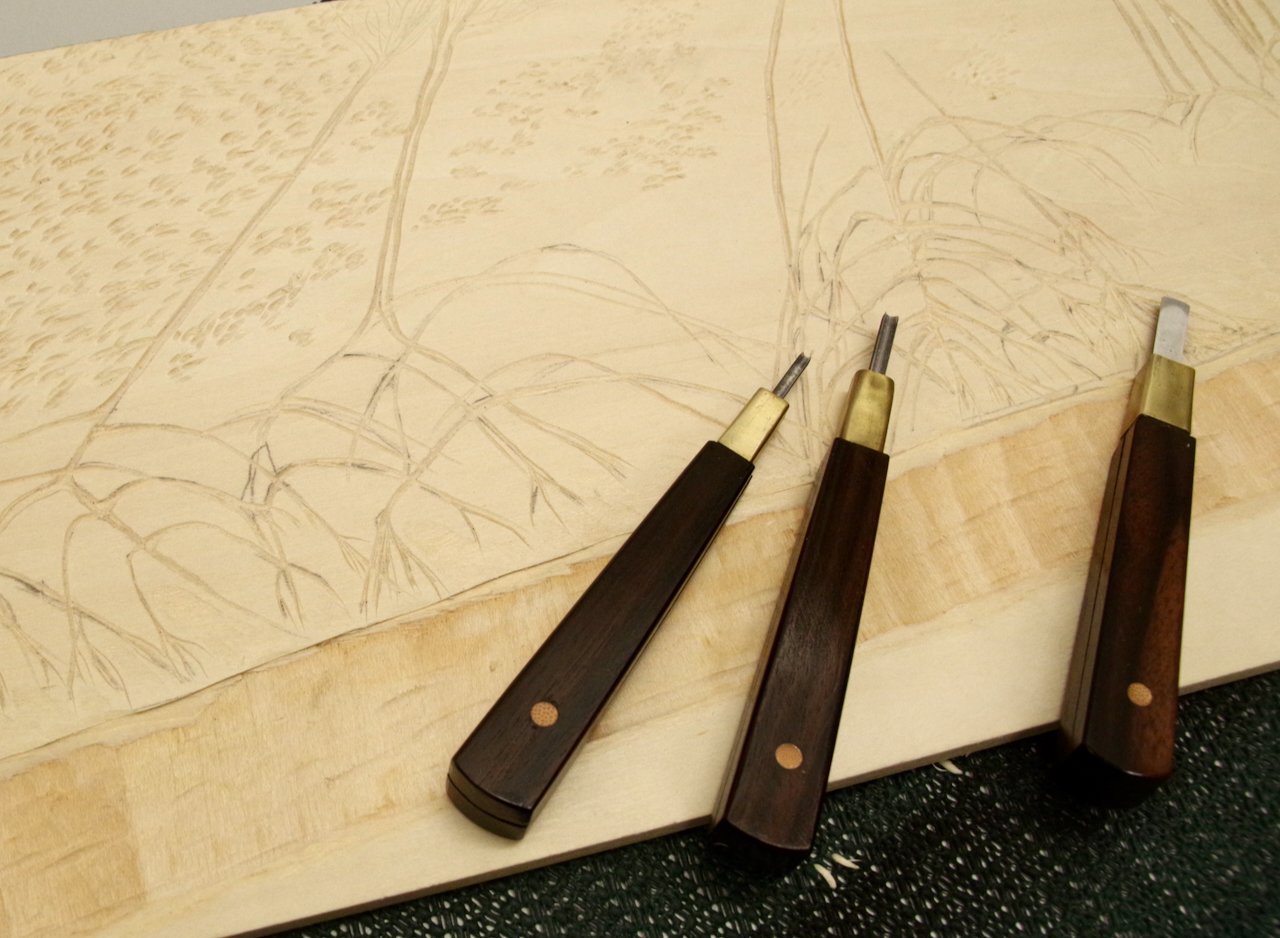Water-based woodblock printmaking (mokuhanga)
Water-based woodblock printmaking is also known by its Japanese name mokuhanga.
Mokuhanga literally translates as “wood” (moku) and “print” (hanga). The process originates from the traditional technique that was used to create ukiyoe prints in Japan. Woodblocks are carved by hand and printed by hand onto handmade Japanese paper (washi) using water-based pigments and the application of pressure using a baren.
Traditionally, woodblocks were carved according to an original drawing using colour separation, i.e. different blocks for individual colours. These colours sat within a fine black outline, which pulled the colours together like a jigsaw puzzle to create the final image. This was done using a simple but very effective registration system.
Water-based woodblock printmaking tools.
Carving
Using Japanese woodcut tools, the essential process is to cut away areas that are not to be printed and leave areas that will be printed. Although cherry wood was traditionally used, these days many contemporary artists use shina plywood.
Woodblock with carving tools.
Printing
Pigments are mixed with water and depending on several factors such as the amount of pigment, printing pressure or the addition of rice glue, the result can be more translucent, speckled, or flat. In order to be able to spread the pigment over the block, the block needs to be dampened in advance. The paper also needs to be dampened so that it doesn’t stick when printing.
The ink is applied and spread on the block using traditional brushes made from horsehair, which look somewhat like shoe brushes. There are various sizes of brushes to suit the printing process.
The paper is handmade and is called washi. It generally contains kozo fibre, which is from the mulberry plant. There are various types of paper made in different areas of Japan.
Once the block has been inked up and the paper placed on the block, a baren is used to apply pressure all over in order to create the print. The baren is hand held and is a disk shape. It is made from layers of very thin paper (washi) for the back and finely coiled bamboo fibre, which is then held together by a bamboo sheath.
The baren for applying pressure to the paper ( left, foreground) and printing brush (back left) with woodblock and print.


